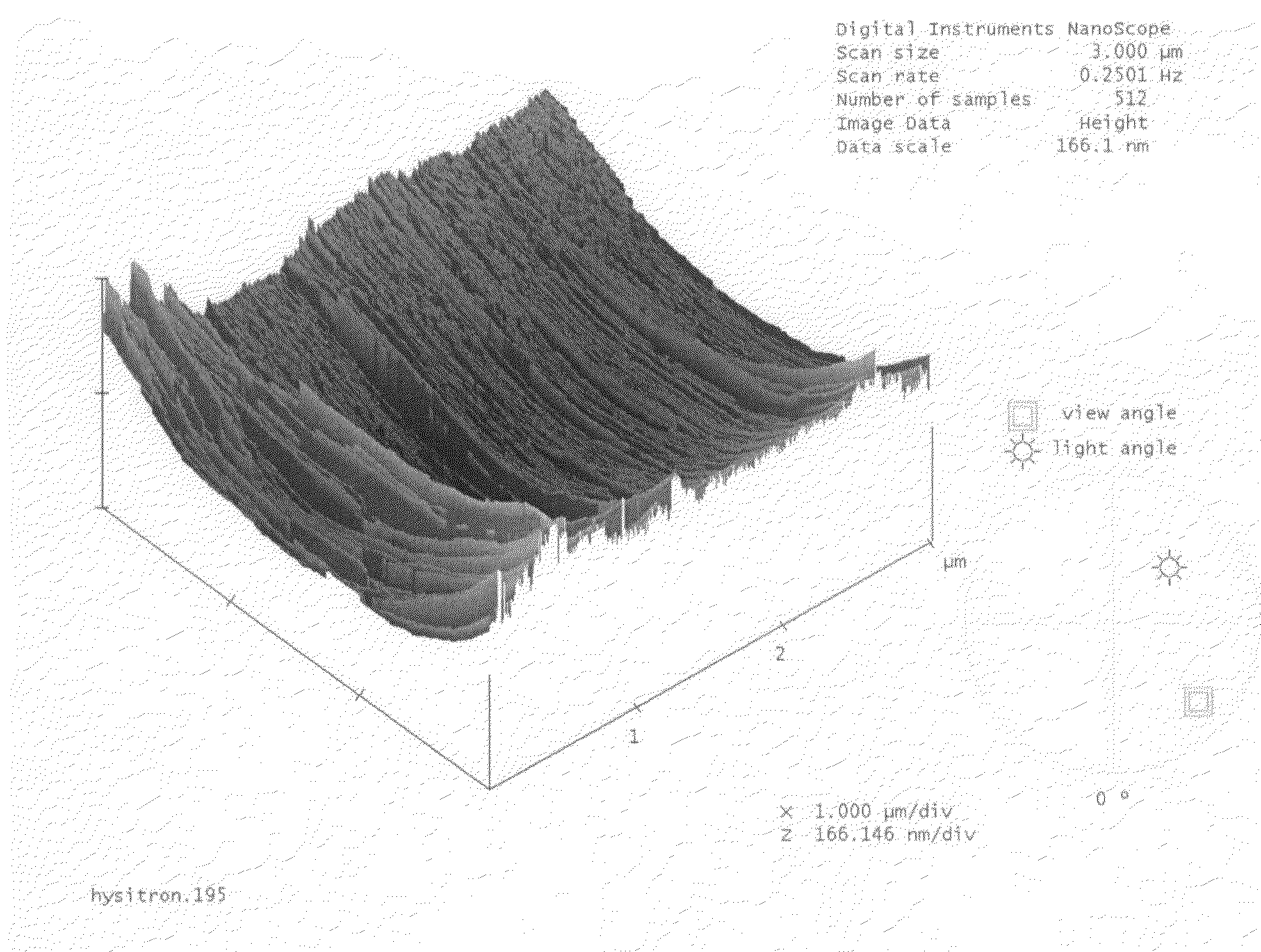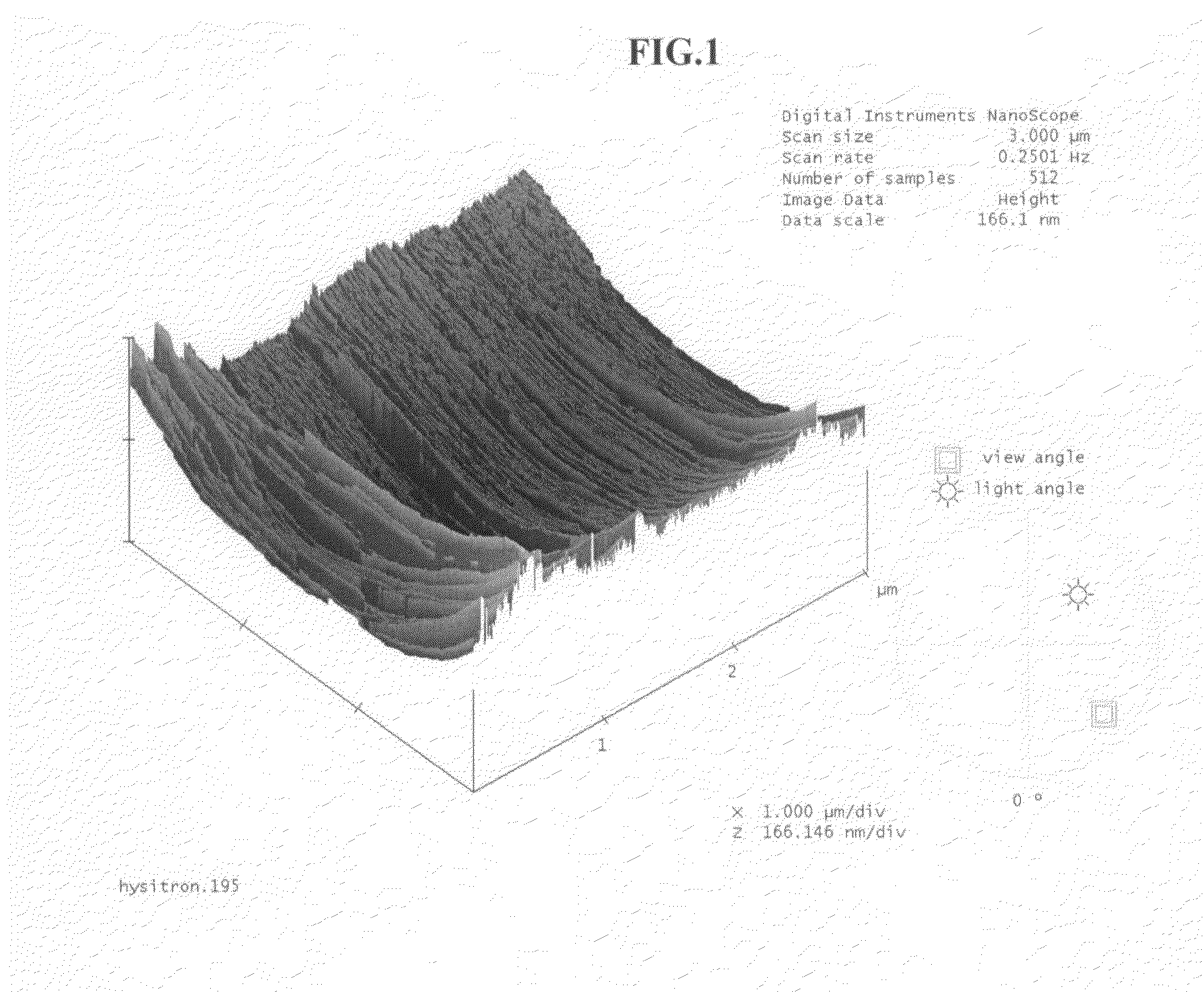Low-temperature method of producing nano-scaled graphene platelets and their nanocomposites
a nano-scale graphene and nano-compositivity technology, applied in the field of nano-scaled graphene platelets, can solve the problems of high material cost, impede the widespread application of cnts, and severely hinder the widespread application of cnts, and achieve the effect of high conductivity and convenient dispersal
- Summary
- Abstract
- Description
- Claims
- Application Information
AI Technical Summary
Benefits of technology
Problems solved by technology
Method used
Image
Examples
example 1
Nano-Scaled Graphene Platelets (NGPs) from Natural Graphite Flakes
[0041]One hundred grams of graphite flakes, ground to approximately 20 μm or less in sizes, were immersed in an acid solution (sulfuric acid / nitric acid / manganese permanganate ratio=4:1:0.08) for 20 hours. The resulting graphite intercalation compound (GIC) was repeatedly rinsed in deionized water to obtain an expandable graphite batch.
[0042]Subsequently, approximately ⅓ of the expandable graphite was transferred to a furnace pre-set at a temperature of 600° C. for 45 seconds (Sample A) and another ⅓ at 1,050° C. also for 45 seconds (Sample B). Sample A was found to exhibit low expansions of graphite crystallites with an expansion ratio of 10-30. Sample B exhibits an expansion ratio of 45-80. Approximately 0.1 grams each of the two samples were then immersed in an ultrasonication bath containing water as a medium. An ultrasonic energy level of 85 W (Branson S450 Ultrasonicator) was used for further exfoliation, separa...
example 2
NGP Nanocomposites
[0046]Approximately 5 grams of Sample A was added to 100 mL of water and a 0.2% by weight of a surfactant, sodium dodecylsulfate (SDS) to form a slurry, which was then subjected to ultrasonication at approximately 10° C. for one hour. A stable dispersion (suspension) of well-dispersed nano-scaled graphite platelets was obtained. A water-soluble polymer, polyethylene glycol (1% by weight), was then added to the suspension. Water was later vaporized, resulting in a nanocomposite containing NGPs dispersed in a polymer matrix.
example 3
NGPs from Short Carbon Fiber Segments
[0047]The procedure was similar to that used in Sample A of Example 1, but the starting material was carbon fibers chopped into segments with 0.2 mm or smaller in length prior to the acid intercalation treatment. The diameter of carbon fibers was approximately 12 μm. An expansion ratio of 16 was obtained at 350° C. and, after ultrasonication for 4 hours at 85 W, the platelets exhibit an average thickness of 9.8 nm.
PUM
| Property | Measurement | Unit |
|---|---|---|
| thickness | aaaaa | aaaaa |
| thickness | aaaaa | aaaaa |
| diameter | aaaaa | aaaaa |
Abstract
Description
Claims
Application Information
 Login to View More
Login to View More - R&D
- Intellectual Property
- Life Sciences
- Materials
- Tech Scout
- Unparalleled Data Quality
- Higher Quality Content
- 60% Fewer Hallucinations
Browse by: Latest US Patents, China's latest patents, Technical Efficacy Thesaurus, Application Domain, Technology Topic, Popular Technical Reports.
© 2025 PatSnap. All rights reserved.Legal|Privacy policy|Modern Slavery Act Transparency Statement|Sitemap|About US| Contact US: help@patsnap.com


